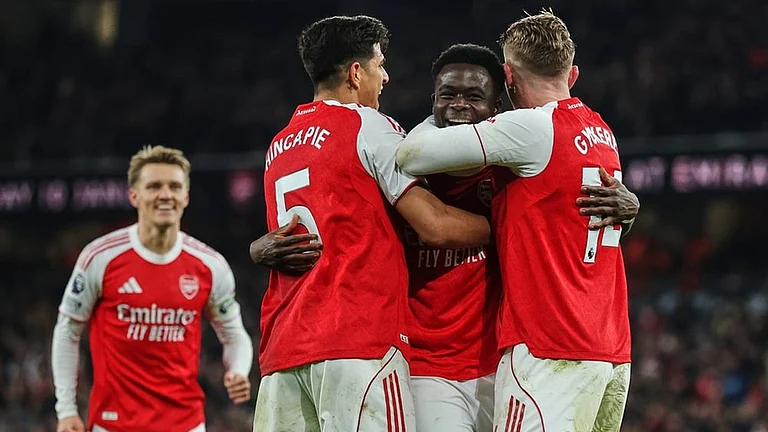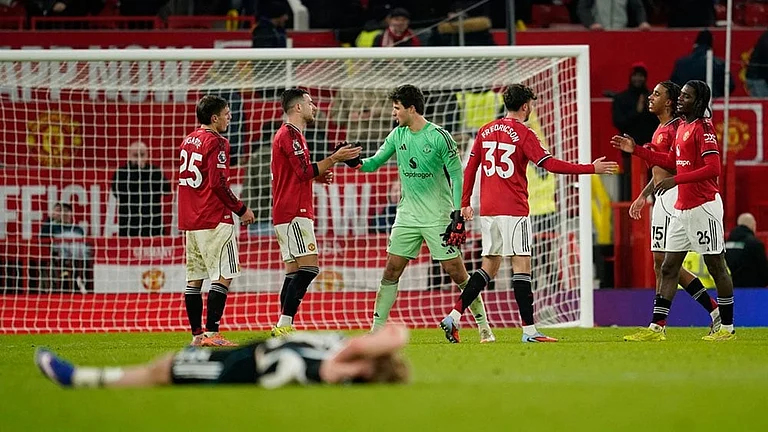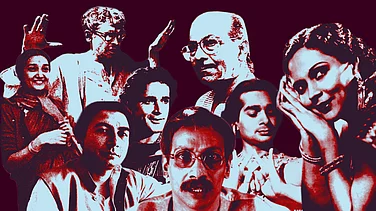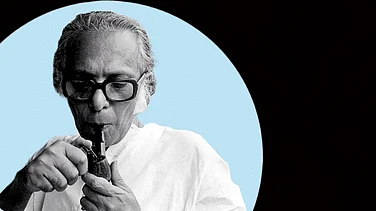The question is casual, a tad indifferent. “What do you like best about me?” beautiful novelist Dhwani (actress Honey Rose) asks glum odd jobs man Abdu (Jayasurya) in last year’s Malayalam movie Trivandrum Lodge. It’s only a veiled sexual allusion, but Abdu catches on. His face deadpan, he replies, “Kundi! (Your arse).” She laughs, then pouts and wishes her husband had been this honest. “I would have hugged him and stayed on with him,” she adds wistfully. Not to be outdone, 2013 film Amen opens with a scatological scene—faecal matter is gift-wrapped and thrown around—and if that doesn’t make you cringe, there’s more: a toddy shop owner lets off a long, resounding fart and his mother comes running: “Entho (what), did you call me?” she asks.
A newfound ease with obscenities is only one of the points on the graph: the ‘new wave’ genre has a lot going for it in Kerala, critical acclaim being the least of it. It isn’t just the bold language or steady Manglish (Malayalam and English) banter that make these films different. Script is key again, there’s a high irreverence going around and young rebellion is in the air. Actor Anoop Menon, who’s scripted and acted in several films of this genre (Cocktail, Beautiful, Trivandrum Lodge, Hotel California...), isn’t too keen about the ‘rebellion’ part. “I would say it’s total liberation. Unlike the structure of speech where there is a rigid beginning, middle and end, cinema in this genre is made of moments...a visual magic happens. We are trying to tell a story, where there is no storyline, through a thousand visuals.”
Of course, any sort of conformity would be a big sin here, but the so-called new wave is in an evangelical mood, using self-reference and modish estrangement techniques with full solemnity. Da Thadiya (Hey Fatso) opens with a man sitting on the beach and a narrator announcing, “This is not the beginning or the end. This is the climax!” And in Ni Ko Nja Cha, the protagonist, presumably infected with AIDS, commits suicide and a director (a character in the film) plays deus ex machina, reverses the climax and reshoots it to make a more palatable version for the audience. Okay guys, we get you.
It’s as if the demystification of cinema (in a way aided by the democratic spread of visual technology in recent times) has simplified the filmmaking process and opened the floodgates. In the last 4-5 years, a whole crop of newcomers—editors, technicians and directors—have established themselves while a set of believable actors like Fahad Fazil and Nivin Pauly have established die-hard fanbases. Relative newcomer Rima Kallingal, filmstar-pretty and intense at once, bagged the state film award for best actress this year for her enthralling and a tad violent role in 22 Female Kottayam.
And all this experimentation, in a way, has been made possible because movie budgets are down. With just a crore, a film is in the can. Indeed, 2013 will probably see the highest number of films ever in the history of Malayalam cinema. In the last four months, over 60 films have hit the theatres; nearly a fourth are from the ‘new wave’. This kind of productivity was last seen in the ’80s when Mollywood churned out some 100 films yearly (1984 and ’85 saw 120 films each). In the ’90s, top-heavy, pricey superstar films took over the ecosystem, killing all else. It’s taken till this decade for a renaissance of sorts to happen. An obviously world-cinema-literate generation—with shotmaking, narrative technique (often the narrative too) inspired from festival/DVD circuit films—has managed to evolve, through imitation, a whole homegrown grunge style. Films on a novel range of subjects resulted—Cocktail, Salt ’n Pepper, Traffic, Chappa Kurishu, then Beautiful, 22 Female Kottayam, Trivandrum Lodge and Da Thadiya.
But not all from this genre are box-office grossers, many don’t even make it past opening weekend. This year, the likes of Radio, Dolls, My Fan Ramu, Omega.Exe, Good Idea had to be pulled early from theatres. Says Anil V. Thomas, general secretary of the Kerala Film Chamber of Commerce, “In the ’80s, the number of hits was also high. Today, though the number of films has increased, the hit ratio hasn’t proportionately...hardly 12 per cent of films from all genres earn a good run. As for the new wave, only a few break even. Films with the big stars have a viewership in the 2nd and 3rd tier theatres too while the new wave is confined to the urban multiplexes. Earlier, they managed to cover their costs through sale of satellite rights and DVD sales. This year, these buyers too have become very selective. It’s going to be very tough.” And yet, it’s undeniable that something is afoot in Mollywood.
In the past two months, Amen has had a good run and director Lijo Jose Pellissery is pleased as pie. He might well be, given his earlier Nayakan and City of God came a cropper after the first few days. Pellissery concedes it is the slew of new films that have helped the audience connect now, much later, with his older films. “The Kerala audience is amazing. If you give them a slapstick comedy, they will come down to that level and enjoy it and when needed they’ll raise their level to appreciate high art. Just that when City of God was first released, they weren’t quite ready for it.” The intensity of the visual images and multi-layered form of narration that Pellissery experiments with is mesmerising. In City of God he’s used a complex hyperlink technique of narration that replays scenes to dovetail multiple plots. “The plotlines had to fit perfectly and I worked hard to get it right,” he says.
Women play pivotal roles in many of these films. 22 Female Kottayam, Cocktail, Beautiful, Trivandrum Lodge are just a few with strong female protagonists. It’s like a breath of fresh air to find Ravishankar (screenwriter Anoop Menon) confining himself to a small role in Trivandrum Lodge while Dhwani hogs centrestage. In 22 Female, the hero even gets bobbitised—a profound moment, as critics noted. The unbridled masculinism of the superstar era is under attack. Trivandrum Lodge director V.K. Prakash, who’s helmed a few of these films, says it’s a cycle. “Every now and then we see this kind of experimentation. The gurus of Malayalam cinema left a rich legacy. Bhargavi Nilayam (1964) had the protagonist talking to a ghost. There was a lot of experimentation going on even then.”
Of course, naysayers abound. As director T. Deepesh points out, “Making shoddy films and celebrating it under the guise of new wave isn’t exactly the best thing to happen to us. Some of these films are just copied from world cinema. This stymies originality and films with good content do not get due recognition. A film like Chayilyam is hardly known.” Manoj Kana’s Chayilyam won for best story at the 2013 Kerala state film awards and the best debut Indian film at IFFK but is yet to be released. “Distributors are not interested in films which are not entertaining,” says Kana, who spent five years arranging money for the project.
“Over one lakh people contributed to making Chayilyam. I am a theatre person and I had to educate the audience on why I wanted to make this film. We got Rs 35 lakh through bucket collections, the total production cost was Rs 50 lakh.” Kana who spent many years studying his subject feels the new crop of films are immature. “No serious study of a subject is done. People with no social or political awareness take a fragment from a foreign film and make a film. The very name ‘new wave’ should suggest something different in every sense.” Kana’s film funding perhaps then is rightfully a new wave, though he just calls it a “people’s film”.


























